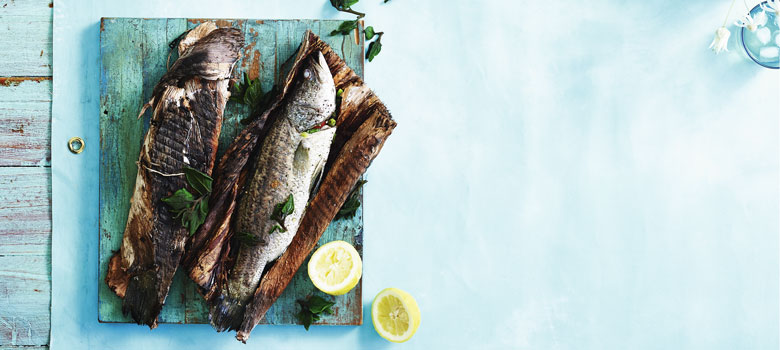
Food
Seasonal Barramundi
While many of Australia’s native ingredients remain new to many, and unknown to most, the barramundi is not one of them. More Australian than the barbecue, the hills hoist and even the goon-bag, the barra is one of our best-known fish. That said, it is quite likely the fish owes its renown to its ability on the end of the line, more than it does to its time in the frying pan. That’s not actually fair to this great eating fish.
The name barramundi is derived from an Aboriginal word, originating from the Rockhampton area of Queensland meaning ‘large-scaled river fish.’ It is, indeed, its environment that renders this fish particularly interesting, running the gamut from fresh water to sea water. This ability to swap between the salt and fresh water will also impact the colour; the silvery specimens are most often fished from salty water, while the tones tend to dark brown for those caught in freshwater ponds or waterways. The shifting waters will also change their fat composition. (This fish is no stranger to change, starting life as a male and changing to female at a few years old.)
On the hunt
Whether swimming in salt or fresh water, barramundi tend to enjoy their time at the bottom of the river-bed, where they lie in wait to ambush their prey (where the hunted becomes the hunter!). It was thought this led to an occasional muddy flavour, however, it is now believed that this is caused by a chemical compound called geosmin, found in naturally occurring algae.
Happily, there are some great advances in the farming of this fish, resulting in strong-muscled and delicious tasting fish. Keep an eye out for Humpty Doo in the Northern Territory, Cone Bay in Western Australia and Coral Bay in Queensland. Salting the fillets up to 24 hours before cooking can help if they’re not too firm – salting the skin, and thus drawing out the moisture, will also help create an extra crisp exterior. If you are lucky enough to get your hands on some wild barramundi, keep an eye out for the fish coming out of Mackay.
Their flavour, particularly when wild, will be earthy, almost mushroomy, with a slight nuttiness and an inherent sweetness. Barramundi has been made popular in the kitchen for these flavours – lending itself to both delicate sauces and more robust flavours – and its versatility in cooking. The fish can be fried, chargrilled, smoked or roasted, while plate-sized barramundi is delicious served Chinese-style, steamed with soy, ginger and shallots, or cooked whole on the barbecue (wrapping in foil will help protect it). Beyond its flavour and forgiving flesh, it’s a great source of omega-3s (especially for a white fish).
It’s true that there are not many Aboriginal words that have found their way into the Australian vocabulary. It’s true there should be many, many more. Likewise, with Indigenous ingredients. Here is your chance to begin with both.
Select and store
A large number of the barramundi available in Australia is farmed in the tropical waters of Australia and Asia (note, many of the barramundi you find at market are actually imported). It is a fish that is found in sustainable stock numbers.
Where possible, try to track down wild barramundi (note, the season is closed between November and February, when the north of Australia is in monsoon season).
Look for fish with firm white/pink flesh and the skin on, so that you can create a lovely crisp exterior (salt the skin in advance, grill on a hot plate with a bowl over the top to steam the flesh side). If roasting or pan-frying, buy barramundi with skin-on, if steaming or poaching, you should remove the skin.
A whole fish will weigh anywhere between 2–8kg. Barramundi is also sold in fillets and cutlets. Where possible, buy the barramundi on the day you are cooking it, otherwise wrap it in foil and refrigerate.
Barramundi loves
Bok choy, butter, chilli, duck, ginger, lemon, mushrooms, peas, potatoes, radicchio, shallots, squid, spinach, soy, tomato, thyme, zucchini.